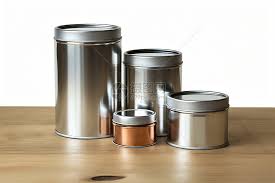
Hello,
This public welfare blog post, authored by a Logistics and Software Technology Analyst, aims to provide an in-depth look at the various types and applications of metal containers, from their role in the food industry to their use in global shipping.
Process (P)
1. Material Composition: Metal(what is the metal ?) containers(what is the container?) are made from materials such as aluminum, tin, or steel, designed for storing consumer products, including food and beverages.
2. Survival and Outdoor Use: In survival situations and outdoor adventures, metal containers are valued for their versatility and indispensability.
3. Food Packaging: Metal food containers encompass a range of shapes and sizes, including cans, plates, and trays, made from aluminum, bimetal, steel, tinplate, or other metals.
4. Durability and Longevity: Metal or steel containers offer a durable, robust, and lasting storage solution suitable for businesses and warehouses of all sizes.
5. Shipping and Freight Containers: These are sealed, rigid, and reusable metal boxes for transporting goods via ships, trucks, or trains, designed for ease of use and to facilitate cargo transportation without intermediate reloading.
6. Custom Storage Solutions: Custom storage containers made from weathering steel, known as Corten steel, are a special alloy ideal for container manufacturing.
7. Materials and Sustainability: Aluminum shipping containers are popular for their strength, light weight, durability, corrosion resistance, and recyclability, though they are often used for domestic rather than overseas shipping.
8. Marine Containers: These large metal containers are designed to withstand harsh maritime conditions and come in standard lengths of 20, 40, and 45 feet.
9. Chemical Considerations: While metal containers are typically made from steel and aluminum, which may contain low levels of hazardous chemicals, their use is regulated to ensure safety.
10. Cost and Conditions: The price range for standard containers varies based on type and size, and different container conditions such as WWT (Wind and Watertight) and CW (Cargo Worthy) exist to meet specific transportation needs.

To make informed decisions about metal containers:
- Understand the different materials and their properties to choose the right container for specific applications.
- Consider the environmental impact and recycling capabilities when selecting metal containers.
- Ensure compliance with safety standards to protect both the goods being transported and the environment.
Metal containers are a testament to human ingenuity, offering a reliable and efficient solution for storage and transportation across various industries.
Stay informed and choose metal containers that balance durability, sustainability, and safety.
Best regards,
Zhijiang Wu
Tins Packaging Industry Analyst
Whatsapp or Wechat +8618990339600